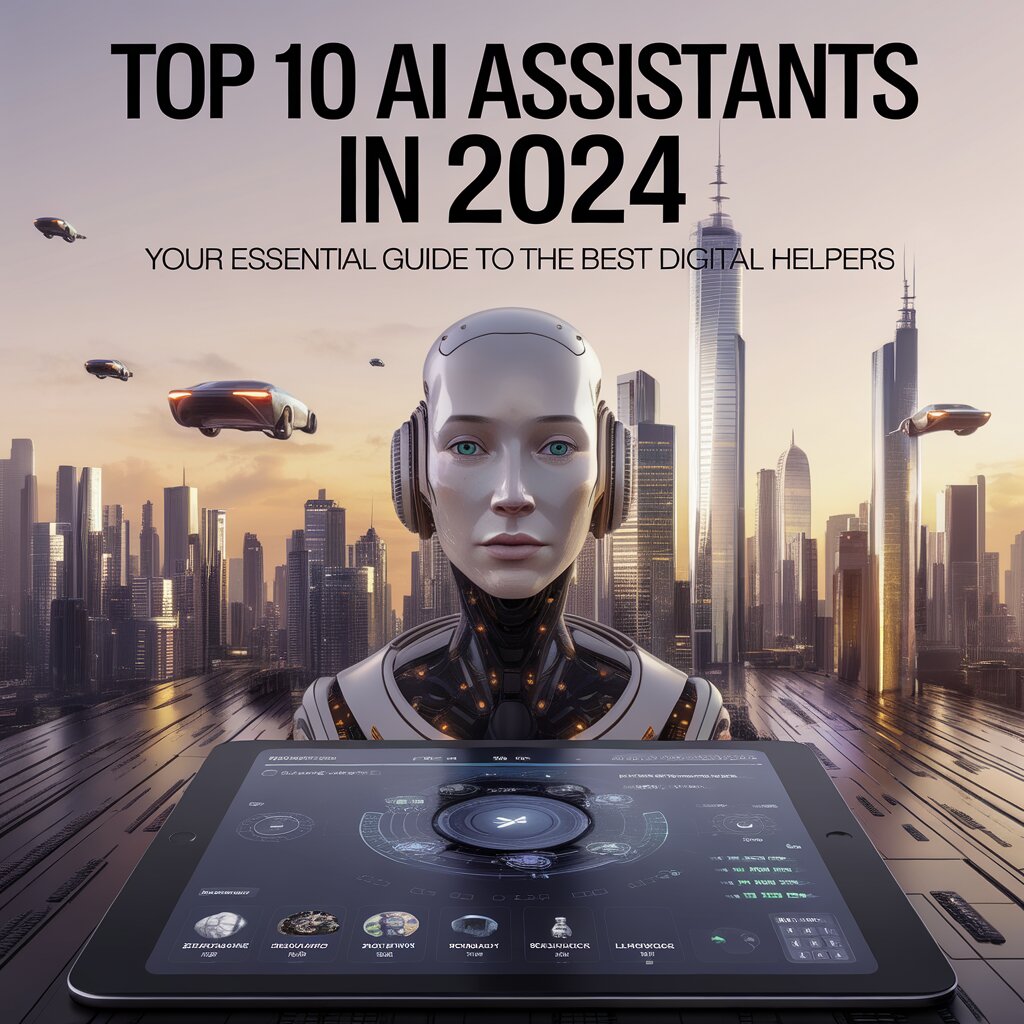Artificial intelligence (AI) assistants have rapidly evolved to become indispensable tools in our daily lives. From managing schedules and answering questions to assisting with business tasks and educational goals, AI assistants are seamlessly integrating into a variety of applications. Here’s a dive into the top ten AI assistants that are leading the way in 2024.
An AI assistant is fundamentally a software program powered by technologies such as natural language processing (NLP) to interpret and respond to voice and text commands. These virtual helpers handle tasks akin to those performed by human assistants, including reading text, making calls, and taking dictation. Most are cloud-based, allowing access from any internet-connected device, and can be integrated with smart devices for enhanced convenience. The most sophisticated AI assistants utilize self-learning algorithms to personalize interactions based on user preferences and speech patterns.
1. GPT-4o: Pushing Conversational AI Boundaries
The cutting-edge ChatGPT app, driven by the GPT-4o model, is transforming how we interact with AI. This iteration boasts enhanced understanding and response accuracy, making it capable of handling intricate queries and generating contextually relevant answers. Its intuitive interface ensures natural, human-like interactions, and it continuously learns to adapt to user preferences, ensuring efficient and personalized conversational experiences over time.
2. Laxis AI Meeting Assistant: A Business Game-changer
Laxis offers powerful AI-driven tools designed to streamline business meetings and enhance productivity. With capabilities like automatic note-taking, meeting summaries, and integration with platforms such as Zoom and Google Meet, Laxis saves users significant time. Its AI SDR feature supercharges lead generation, providing businesses access to unmatched data for outreach and follow-ups.
3. OtterPilot™: Elevating Meeting Productivity
OtterPilot™ is an AI meeting assistant that revolutionizes the way meetings are recorded and documented. It records audio, writes notes, captures slides, and generates comprehensive summaries. Integrating seamlessly with Google and Microsoft calendars, it can automatically join and record meetings, significantly improving efficiency and collaboration.
4. Fireflies.ai: Simplifying Meeting Transcriptions
Fireflies.ai puts an end to manual note-taking during meetings. Using NLP, it records and transcribes discussions, allowing users to search through transcripts swiftly. Its powerful search functionality enables users to review lengthy conversations in minutes, and it integrates impeccably with various web conferencing platforms.
5. Siri: The Pioneer Continues to Innovate
Apple’s Siri remains a household name in the world of AI assistants. Available on all major Apple platforms, Siri uses a natural language user interface to perform a myriad of tasks, from answering questions to sending texts and making calls. Siri adapts to individual user preferences, ensuring highly personalized interactions.
6. Cortana: Microsoft’s Multifaceted Assistant
Cortana, Microsoft’s AI assistant, leverages NLP and the Bing search engine to provide personalized recommendations and manage tasks. Compatible with Windows, Android, Alexa, and more, Cortana consistently learns from device data to improve its functionality. Privacy-focused, it allows users to control their data intricately.
7. Amazon Alexa: The Ubiquitous Helper
Amazon Alexa has surged in popularity, embedded in over 100 million devices. Known for its wake-up word feature, Alexa uses voice interaction and NLP to perform tasks ranging from setting alarms to providing real-time information on traffic, weather, and more. Its seamless integration with smart home devices enhances its utility.
8. Google Assistant: A Voice for All Devices
Google Assistant, launched in 2016, is among the most advanced AI assistants. It’s integrated across a wide array of devices, including smartphones and home appliances, optimizing control through voice and text entry. With capabilities like real-time translation and scheduled reminders, it stands out in versatility and functionality.
9. ELSA Speak: Revolutionizing English Learning
ELSA Speak exemplifies how AI can be harnessed for educational purposes. This app aids users in learning English pronunciation through interactive dialogues and instant feedback. With millions of downloads globally, ELSA Speak continues to assist learners in improving their language skills efficiently.
10. Socratic by Google: A Student’s Best Friend
Socratic is designed to aid students with homework across various subjects like math and science. By allowing students to take pictures of their queries, Socratic employs AI to provide visual explanations, making learning more interactive and comprehensible. Its compatibility with both iOS and Android ensures wide accessibility.
In summary, the integration of AI into daily, business, and educational tasks through these advanced assistants demonstrates their growing importance and the vast potential for future developments. As AI becomes more sophisticated, personalized, and contextually aware, these assistants are poised to play even more pivotal roles in our lives.


